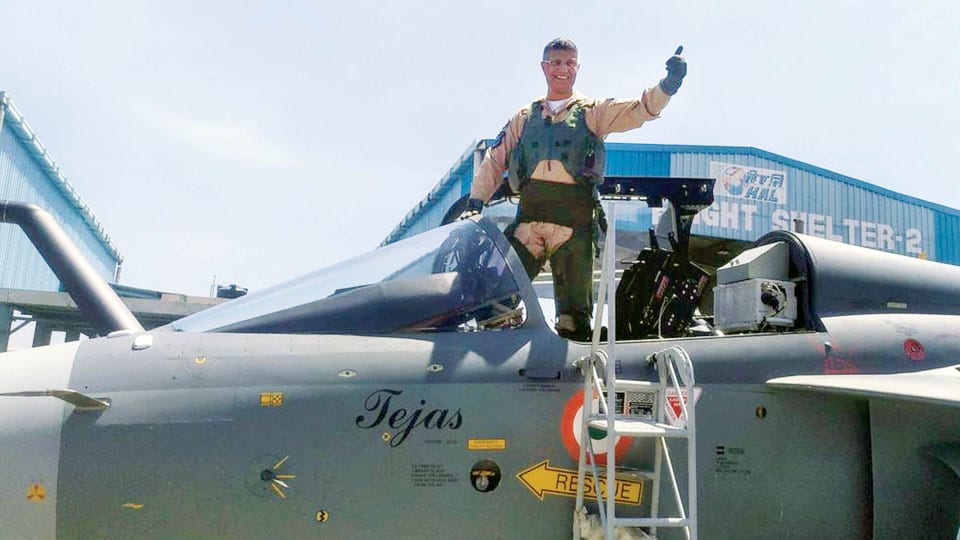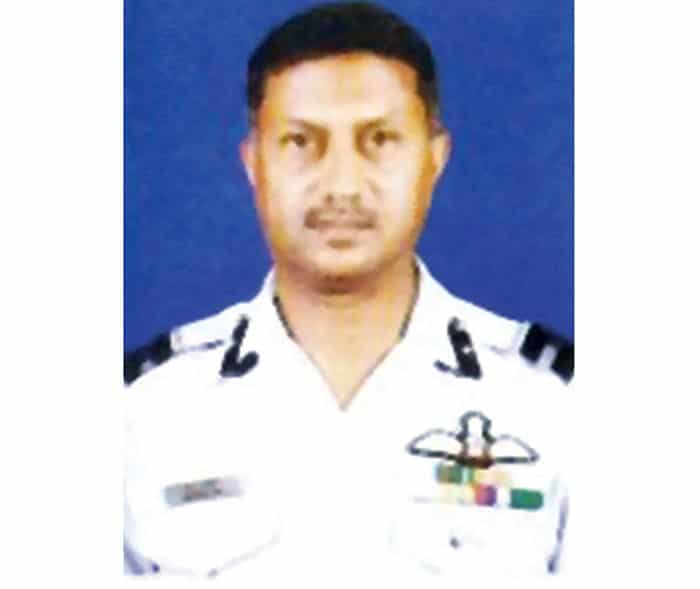
Air Commodore Kalianda A. Muthana flies indigenous fighter plane for 40 minutes
Bengaluru:
The first Light Combat Aircraft (LCA) Tejas in Final Operational Clearance (FOC)-Standard (SP-21) took to the skies for its maiden flight in Bengaluru on Tuesday last, the Hindustan Aeronautics Limited (HAL) said.
Piloted by Air Commodore Kalianda Appaya Muthana (Retd.), Chief Test Flying (Fixed Wing), the aircraft took-off from HAL Airport at around 12.30 pm, the Bengaluru-headquartered defence Public Sector Unit said in a statement. It was air-borne for 40 minutes.
This flight signifies exemplary team work between various stakeholders of the LCA Tejas programme such as HAL, Directorate General of Aeronautical Quality Assurance, Centre for Military Airworthiness and Certification (CEMILAC), Indian Air Force (IAF) and Aeronautical Development Agency (ADA), HAL Chairman and Managing Director R. Madhavan said.

K.A.Muthana
15 fighters by April 2021
HAL is targeting 15 fighters by April 2021. The flight is the first step in a series of things lined up to enable the IAF raise a second squadron of Tejas in Sulur, Tamil Nadu. The first squadron of Tejas — Flying Daggers — is already operating from there.
“HAL achieved the momentous feat within a record time of 12 months after release of Drawing Applicability List (DAL) and SOP (Standard Operating Procedure) by CEMILAC”, the statement said. “This would pave the way for production of remaining 15 fighters from FOC (Final Operational Clearance) block, which are planned to be delivered during the next financial year,” it said.
Advanced features
The FOC aircraft are equipped with advanced features such as Air-to-Air refuelling and Beyond Visual Range (BVR) missile system. “It imbibes a lot of manufacturing improvements which were based on the operational feedback of LCA-IOC (Initial Operational Clearance) fleet with IAF”, HAL said.
On February 20, 2019, the IAF had finally agreed that the indigenously developed and built Tejas was combat-ready and received the ‘release to service’ certificate — which means the fighter got the FOC — from DRDO, whose lab Aeronautical Development Agency (ADA) designed the aircraft.
First conceived in 1983
The aircraft, which was first conceived in 1983, is being produced by HAL. Although it was conceived in 1983, the project was only sanctioned in 1993. The FOC and release to service happened close on the heels of the final DAL (Drawing Applicability Lists) of Tejas was released to HAL on Dec. 31.
The aircraft was named Tejas (meaning radiance in Sanskrit) by Atal Bihari Vajpayee when he was the Prime Minister.
The cost of the programme is estimated at Rs. 39,000 crore. Tejas will eventually replace the ageing fleet of MiG-21 planes. All squadrons of Tejas will be made up of 20 planes in total, including four in reserve.
source: http://www.starofmysore.com / Star of Mysore / Home> News / March 19th, 2020


